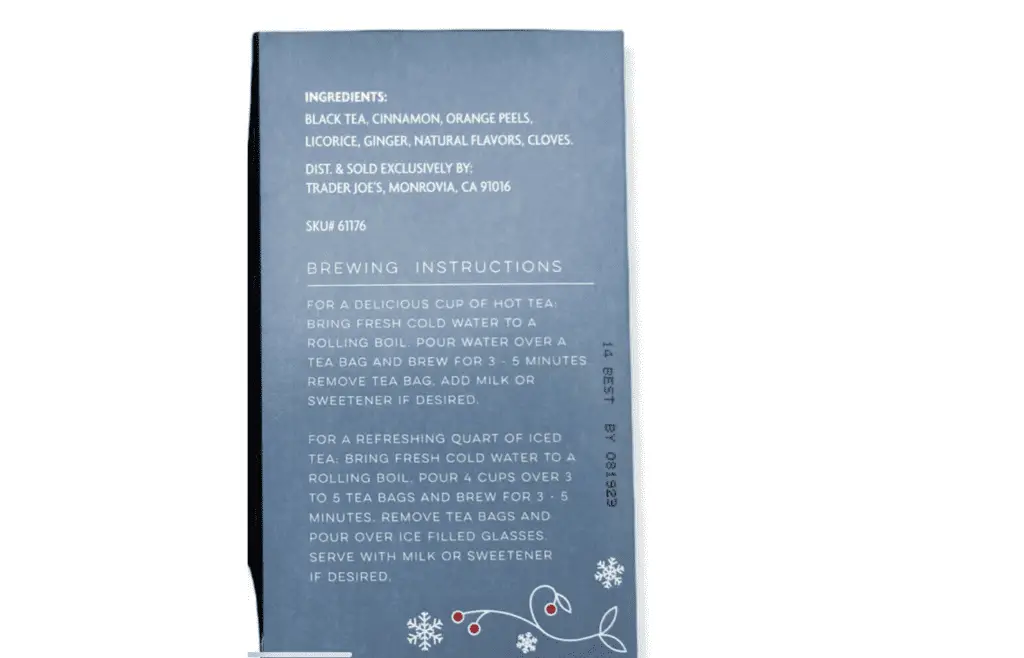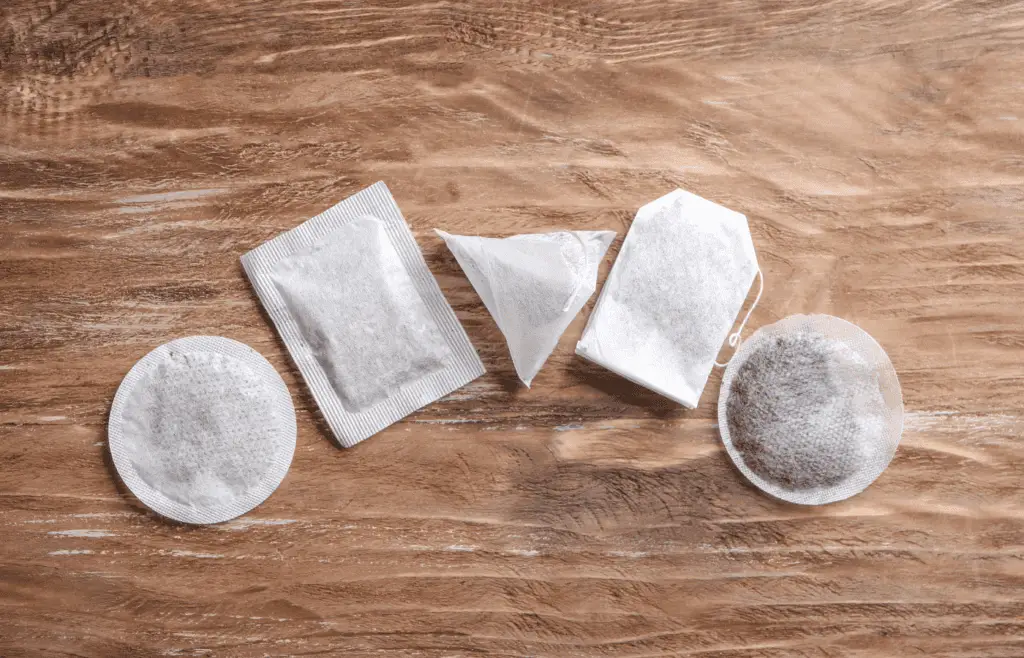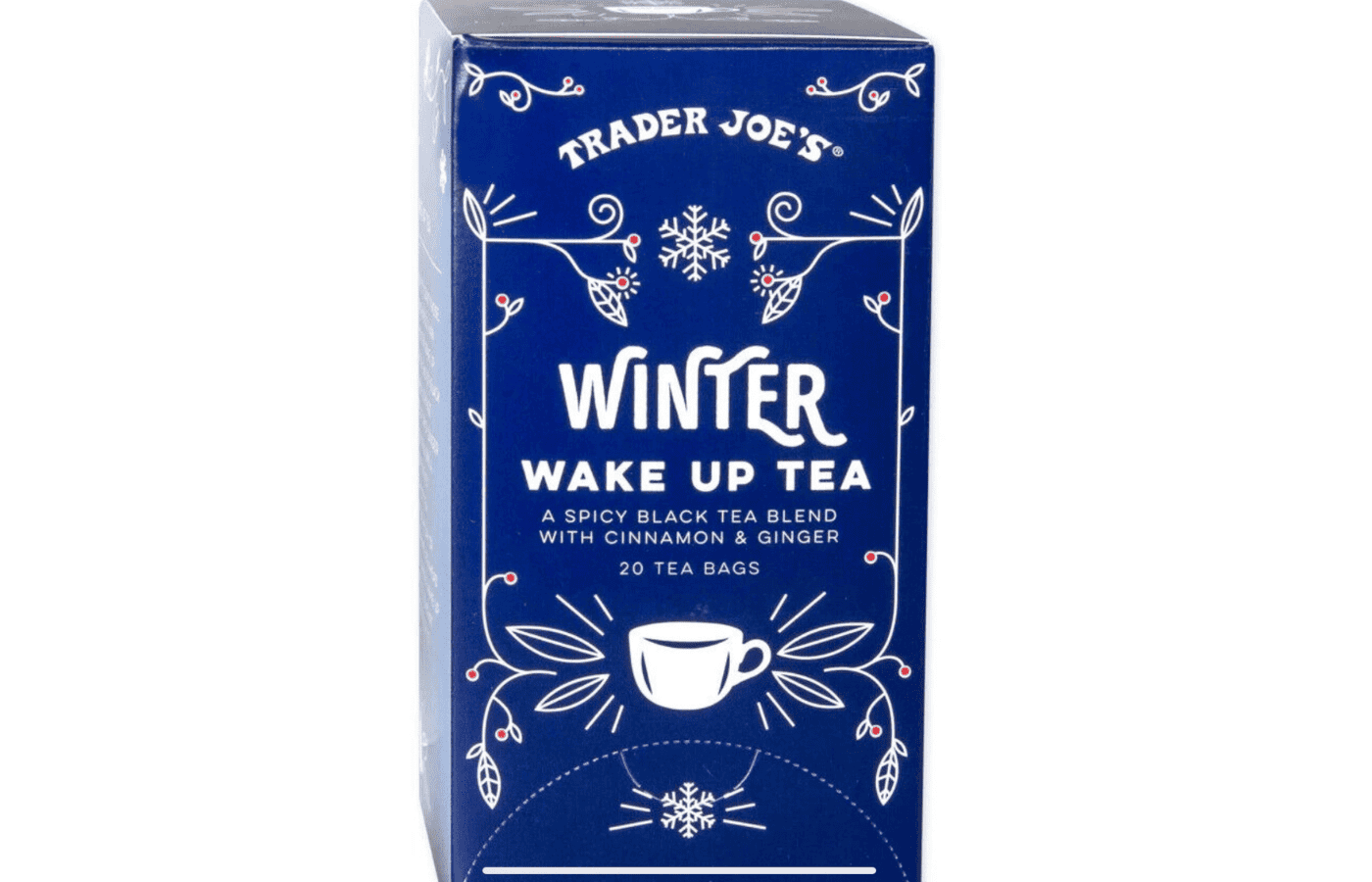It’s always important to know if you are ingesting caffeine when drinking tea. It’s not always apparent on the labels whether or not certain teas contain caffeine. This is important to know as you may be on certain medication, be giving this drink to a child, are caffeine sensitive, or just trying to watch your caffeine intake in general.
Also, with a name like Winter Wake Up Tea, you have to read the ingredients and do your own research to find out if this tea actually contains caffeine.
Trader Joe’s Winter Wake Up Tea contains black tea. On average, black tea contains about 60-75 mg of caffeine per 8 oz cup. Black tea has one of the highest caffeine contents when compared to its green tea and white tea counterparts.
Understanding Trader Joe’s Winter Wake up Tea
What exactly is Trader Joe’s Winter Wake Up Tea? To put it lightly, it’s a winter-spiced blend that contains black tea, sweet cinnamon, orange peel, licorice, spicy ginger, and gloves. All the flavors blend together to create a warm and winter blend that will have you feeling awake in no time.
This is a seasonal item which means it can only be found at certain times of the year. As this is a Winter based tea, you can expect to find this tea on Trader Joe’s shelves towards the end of the year during the holidays.
If you happen to miss your chance to grab this tea at Trader Joe’s while it is in season, you still have a change to pick it up during the year on sites like Amazon and eBay.
To check the current price and availability of Trader Joe’s Winter Wake Up Tea, click here to view the listing on Amazon.
Description of Winter Wake up Tea’s ingredients

Black Tea – There are many types of black teas. Earl Grey and Assam being two of the most popular. However, the ingredients list does not state what type of black tea is used in this blend.
Cinnamon – Besides flavor, cinnamon also has many health benefits. Cinnamon can help curb appetite, as well as reduce inflammation in the body.
Orange Peels – On top of adding flavor, orange peels provide vitamin c and potassium
Licorice – Licorice is commonly added to tea to help with nausea and easing the stomach.
Ginger – Adding ginger in tea can help support a healthy micro biome.
Cloves – Cloves have anti inflammatory properties and can also help to ease pain in the body.
The Role of Caffeine in Tea
Caffeine’s effects on the body are widely known for its energy and metabolism boosting characteristics. It can also enhance one’s mood as well as help keep you awake if you are lacking sleep.
Caffeine is also know to have a diuretic effect on the body. If you consume caffeine on a regular basis, you will eventually start to build a tolerance to it. This means that you will have to ingest more caffeine to get the same effect.
It’s said that it is safe to consume up to 400 mg of caffeine per day. If you are only drinking tea as your main source of caffeine, then it will be unlikely that you will hit that number unless you are drinking in excess of a gallon of caffeinated tea per day.
Types of Tea and Their Caffeine Contents

On average, a tea bag contains about 1.5 g to 3 g of tea leaves. Using a single tea bag seeped in 8 oz of boiling water will yield the results written below when it comes to caffeine content.
Black Tea – On average, black tea will contain about 60-75 mg of caffeine per 8 oz.
White Tea – On Average, white tea contains about 10-15 mg of caffeine per 8 oz.
Green Tea – Green tea contains about 15-30mg of caffeine per 8 oz.
Herbal Tea – Herbal teas are the only types of tea that contain 0 mg of caffeine. This is a great option if you are looking to avoid caffeine altogether as even decaf tea has a small amount of caffeine.
Decaf Tea – Although the name is decaf, there is actually about 5-10 mg of caffeine per 8 oz.
How Caffeine Content Can Vary Based on Preparation and Processing

The above information shows ranges when it comes to the caffeine content in teas. This is mainly due to a few reasons.
Seeping Time
The longer you seep your tea, the more caffeine will be infused in your drink. Leaving your tea bag in boiling water with the suggested seep time is the best way to have a consistent amount of caffeine.
Using More Than One Tea Bag
A popular method of brewing tea is to seep two bags at one time. This is usually done to enhance the flavor or caffeine content of the tea.
Types of Tea
Different types of tea leaves have different types of caffeine contents. Black tea has one of the highest caffeine contents, while white tea and decaf tea contain some of the least amount of caffeine.
Trader Joe’s Winter Wake up Tea: Caffeine Content Analysis
We know that Trader Joe’s Winter Wake Up Tea is a blend that contains black tea. However, The ingredients list does not disclose what type of black tea us used in this blend.
There are many different types of black tea, Early Grey and Assam being two of the most popular. Since the type of black tea used in the Wake Up Winter Tea is not disclosed, we can only assume an average when it comes to the caffeine amount.
Expect that an 8 oz glass of Trader Joe’s Winter Wake Up Tea will contain about 60 – 75 mg of caffeine.
Final Thoughts
Trader Joe’s Wake Up Winter Tea has a black tea base. You can expect it to have anywhere from 60 – 75 mg of caffeine per 8 oz glass.
It’s also good to note that the caffeine content may rise depending on your preparing practices. If you seep your tea with two tea bags instead of one, or even seeping your tea with one bag for a prolonged period of time can both raise the caffeine content in your final drink.


